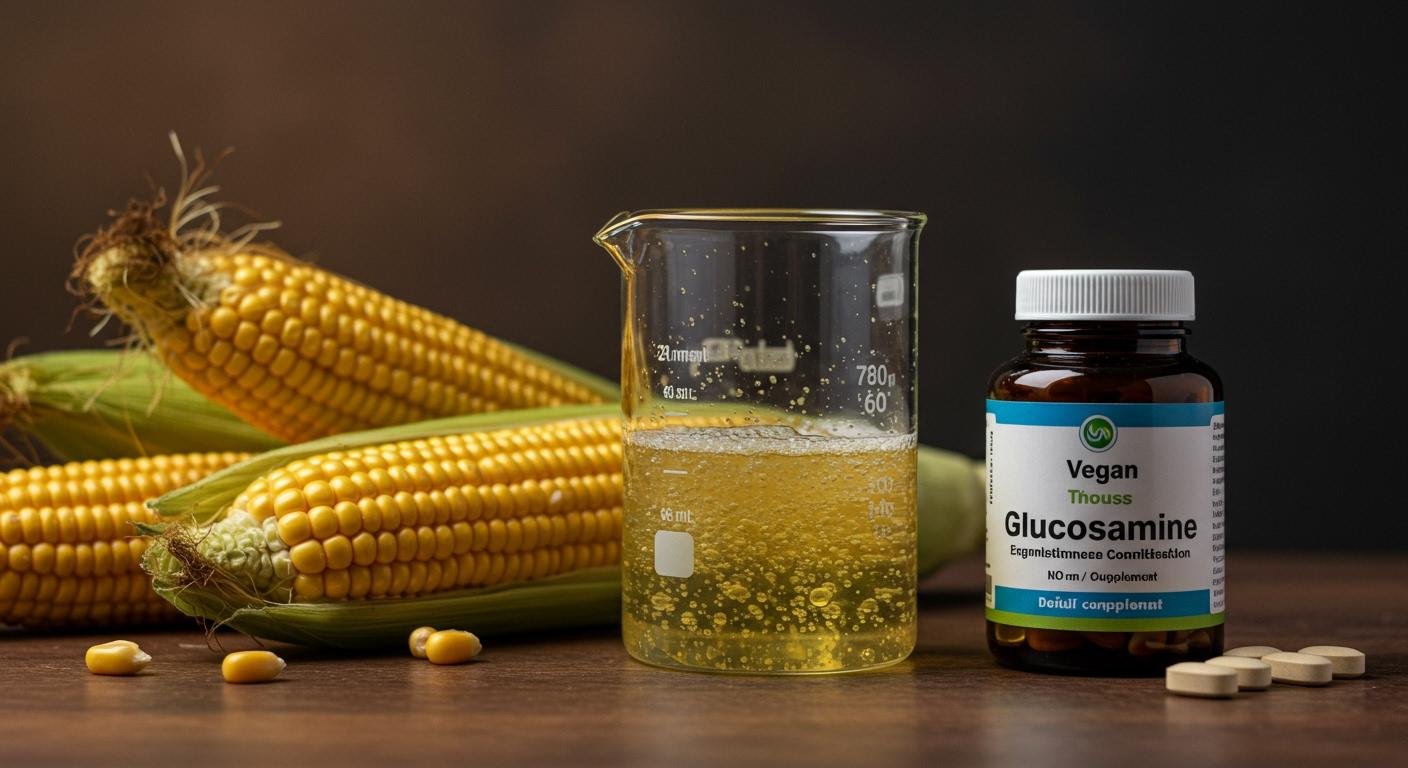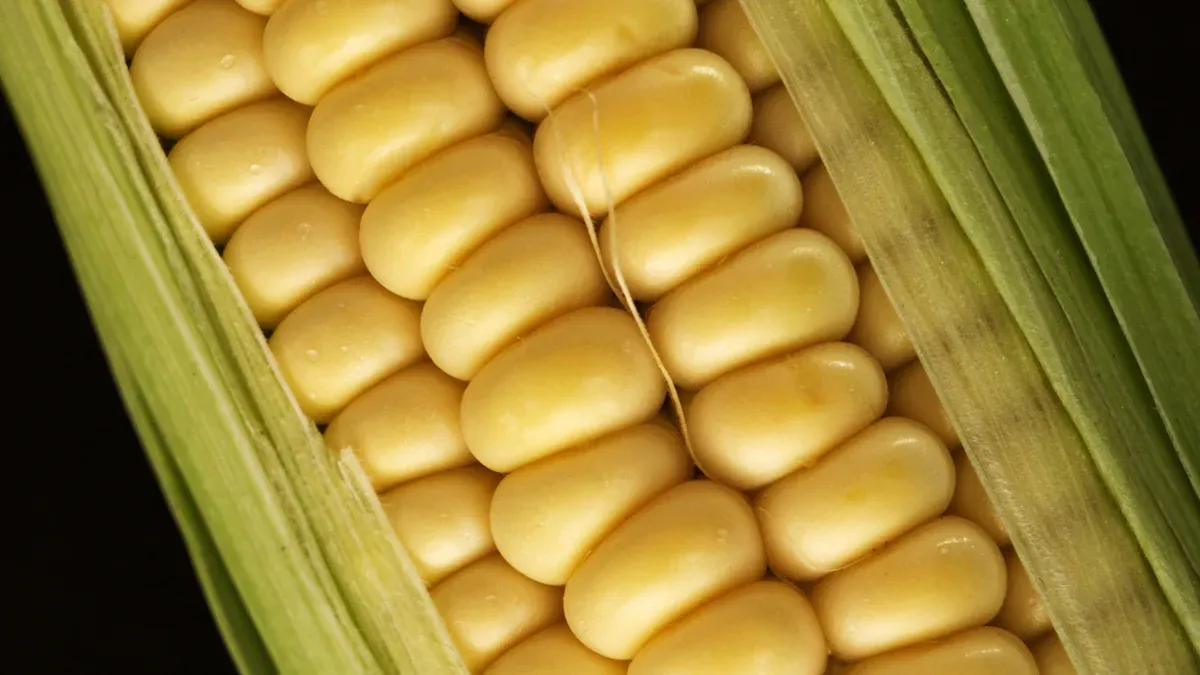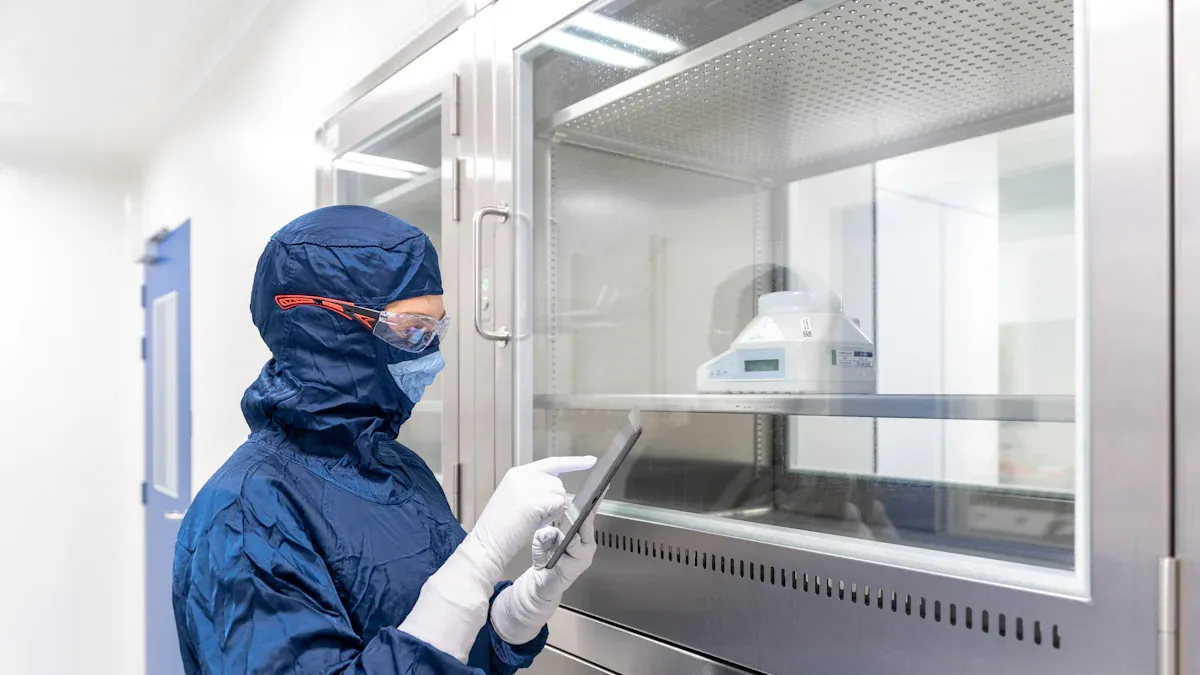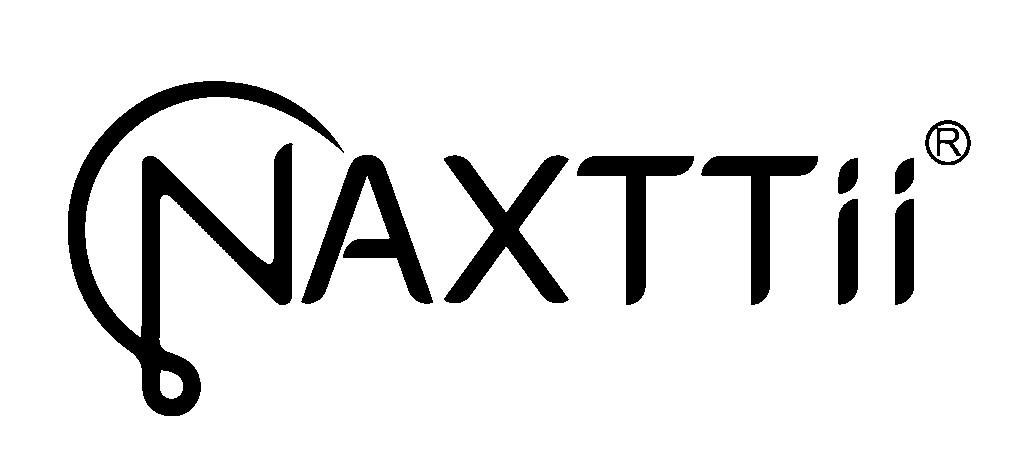How Is Vegan Glucosamine Made?
Table of Contents

Vegan glucosamine comes from fermenting plant-based sugars, most often from non-GMO corn. A microorganism converts plant glucose into pure glucosamine. This method produces a compound chemically identical to the shellfish version but without the allergens. The overall market for glucosamine is expanding steadily.
| Metric | Value |
|---|---|
| Global Market Value (2022) | USD 871.5 million |
| Projected Market Value (2030) | USD 1,309.8 million |
| Compound Annual Growth Rate (CAGR) (2023-2030) | 5.2% |
The demand for plant-based glucosamine reflects the significant growth in vegan supplements.
| Source | CAGR | Forecast Period |
|---|---|---|
| Polaris Market Research | 10.35% | 2025-2034 |
Understanding vegan glucosamine basics helps people choose clean, effective options for joint health.
Vegan Glucosamine Basics: The Sources

Understanding the vegan glucosamine basics starts with its origins. Unlike traditional sources, this modern glucosamine supplement comes entirely from the plant kingdom. The process is both natural and highly controlled. These vegan glucosamine basics ensure a clean and effective final product.
Common Plant-Based Origins
The journey of plant-based glucosamine begins with a simple sugar: glucose. Manufacturers extract this glucose from various plant sources. The most common source for commercial production is non-GMO corn. Microorganisms break down the corn sugar to create glucosamine.
Other plants can also provide the necessary starting material. These sources include:
- Potatoes
- Wheat and other starches
Interestingly, some plants contain glucosamine naturally. The seed of the palmyrah plant is one such example. Scientists can extract glucosamine directly from these seeds. This method shows the diverse ways to obtain plant-based glucosamine. The core vegan glucosamine basics, however, rely on converting plant sugars.
The Role of Fermentation
Fermentation is the engine that powers the creation of vegan glucosamine. This natural biological process uses a specific microorganism to do the heavy lifting.
The key player in this process is a fungus called Aspergillus niger. This organism consumes the glucose derived from corn or other plants. Through its own metabolic pathways, it converts the simple sugar into pure glucosamine.
This controlled fermentation creates a compound that is chemically identical to animal-derived glucosamine. The use of Aspergillus niger is a safe, well-established method in the food and supplement industry. It allows for the large-scale production of high-quality vegan glucosamine, offering a reliable alternative for consumers. This plant-based glucosamine is a testament to modern science.
The Manufacturing of Plant-Based Glucosamine

The creation of plant-based glucosamine is a precise, multi-step scientific process. It transforms simple plant sugars into a highly pure compound ready for use in supplements. This manufacturing journey ensures a final product that is both effective and free from animal-derived materials. The process involves three core stages: fermentation, hydrolysis, and purification.
Step 1: Fermentation
Fermentation is the biological starting point. In this stage, the microorganism Aspergillus niger consumes glucose sourced from non-GMO corn. It metabolizes the sugar and produces a substance similar to chitin, the compound found in shellfish shells. This controlled process takes place in large, sterile tanks called bioreactors. The duration of the fermentation cycle is a critical factor for maximizing yield.
| Study | Fermentation Duration |
|---|---|
| Zhang et al. (2020) | 40-48 hours |
| Ma et al. (2021) | 60 hours |
This initial step creates the raw biomass containing the essential building blocks for glucosamine.
Step 2: Hydrolysis
Hydrolysis is the chemical conversion step. The chitin-like biomass from fermentation undergoes treatment with an acid and water. This process has two main goals:
- It breaks the glycosidic bonds holding the sugar units together.
- It removes acetyl groups from the molecules in a reaction called deacetylation.
These actions are essential to yield D-glucosamine. Manufacturers often use specific acids to achieve the best results.
- Hydrochloric acid (HCl) is commonly used to break down the material’s crystal structure and increase accessibility.
- Sulfuric acid is also effective for producing glucosamine.
This carefully managed chemical reaction breaks down the complex biomass, releasing the raw glucosamine into a solution.
Step 3: Purification
Purification is the final and most critical stage. It refines the raw glucosamine solution, removing any impurities to create a safe and potent final product. This ensures the vegan glucosamine basics of quality and safety are met.
The purification process often involves several advanced techniques. First, the solution is filtered. Then, activated carbon treatment removes colored impurities and other contaminants. Finally, the purified glucosamine solution undergoes crystallization. This step isolates the glucosamine molecules, forming a stable, white crystalline powder.
This rigorous process results in a highly pure compound, often achieving purity levels of 99% or higher. The final product is typically glucosamine hydrochloride (HCl), a stable and effective form of this glucosamine supplement. Brands like GlucosaGreen® and GreenGrown® use this method to produce certified vegan glucosamine.
Glucosamine HCl is often preferred for plant-based glucosamine products. It offers distinct advantages over the traditional sulfate form.
| Feature | Glucosamine Hydrochloride (HCl) | Glucosamine Sulfate |
|---|---|---|
| Concentration | More concentrated glucosamine | Less glucosamine per gram |
| Salt Content | Contains less salt | Requires salt for stability |
| Source | Plant-based fermentation | Typically from shellfish |
This modern manufacturing process delivers a clean, high-purity, and allergen-free option for consumers seeking joint health support.
Vegan Glucosamine vs. Shellfish Glucosamine
Choosing a glucosamine supplement involves understanding the key differences between plant-based and animal-based options. The source material directly impacts the product’s purity, safety, and environmental footprint. Consumers have clear choices when selecting a product for their joint health.
Source and Purity Comparison
The primary distinction between the two types of glucosamine lies in their origins. Shellfish-based glucosamine comes from a non-renewable marine source, while the plant-based version uses renewable agricultural crops. This difference also affects the product’s environmental impact.
| Feature | Plant-Based Glucosamine | Shellfish Glucosamine |
|---|---|---|
| Starting Material | Glucose from non-GMO corn | Chitin from crustacean shells |
| Source Renewability | Renewable and sustainable | Non-renewable, impacts marine life |
| Environmental Footprint | Lower carbon footprint | Higher energy and chemical use |
From a molecular standpoint, the manufacturing process for vegan glucosamine yields a highly pure compound. The final active ingredient is chemically identical to the one derived from shellfish. This means both forms of glucosamine offer the same potential benefits. The controlled fermentation process simply provides a cleaner, more sustainable path to the same effective molecule.
Allergen and Contaminant Risks
Safety is a major advantage of plant-based glucosamine. The most significant benefit is the complete avoidance of shellfish allergens. People with seafood allergies can confidently use the vegan option without fear of a reaction.
While some studies report that severe allergic reactions to shellfish-derived glucosamine are rare, other data shows a notable number of hypersensitivity incidents. This risk, however small, is entirely eliminated with a plant-based product.
Furthermore, shellfish from the ocean can accumulate heavy metals and other pollutants from their environment. These contaminants can potentially make their way into the final supplement. The controlled, sterile environment used to produce plant-based glucosamine ensures a final product free from these ocean-borne contaminants, offering a purer and safer choice for consumers.
The creation of vegan glucosamine involves fermenting plant sugars, like corn, with a microorganism and then purifying the result. This modern method produces a pure and effective glucosamine supplement. The final glucosamine is chemically identical to the traditional version, offering the same benefits for joint health.
The market for plant-based glucosamine is the fastest-growing segment. This reflects a wider consumer trend, with 45% of people wanting more plant-based supplement options.
This shift makes plant-based glucosamine a safe, clean, and allergen-free joint support supplement for today’s health-conscious consumer.
FAQ
Is vegan glucosamine as effective as shellfish glucosamine?
Yes, it is equally effective. The final glucosamine molecule from plants is chemically identical to the one from shellfish. Both versions provide the same support for joint health. The body uses them in the exact same way.
Are there any side effects of a vegan glucosamine supplement?
Vegan glucosamine is generally very safe. It eliminates the risk of shellfish allergic reactions. Some people might experience mild digestive upset.
It is always best for individuals to consult a healthcare provider before starting any new glucosamine supplement.
Who should choose vegan glucosamine?
Vegan glucosamine is an excellent choice for several groups:
- Vegans and vegetarians
- People with shellfish allergies
- Individuals seeking a more sustainable product
It offers a clean and effective option for anyone interested in supporting their joints.
Why is vegan glucosamine usually in HCl form?
Manufacturers often produce vegan glucosamine as glucosamine hydrochloride (HCl). This form is highly concentrated and stable without needing extra salt. It provides a pure and potent product derived directly from the plant-based fermentation process.

Poseidon
Master of Nutritional Epidemiology, University of Copenhagen, Herbal Functional Nutrition Researcher
Focus: The scientific application of natural active ingredients such as Tongo Ali, Horny Goat Weed, and Maca to sexual health and metabolic regulation.
Core Focus:
Men: Use a combination of Tongo Ali (an energizing factor) + Maca (an energy reserve) to improve low energy and fluctuating libido.
Women: Use a combination of Horny Goat Weed (a gentle regulator) + Maca (a nutritional synergist) to alleviate low libido and hormonal imbalances.
Stressed/Middle-Aged Adults: This triple-ingredient synergy supports metabolism, physical strength, and intimacy.
Product Concept:
Based on traditional applications and modern research (e.g., Tongo Ali promotes testosterone-enhancing enzyme activity, and icariin provides gentle regulation), we preserve core active ingredients and eschew conceptual packaging—using natural ingredients to address specific needs.
Simply put: I'm a nutritionist who understands "herbal actives." I use scientifically proven ingredients like Tongo Ali, Epimedium, and Maca to help you make "sexual health" and "nutritional support" a daily routine.
